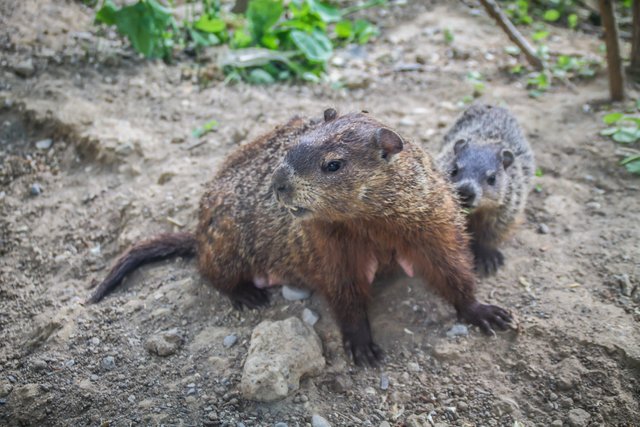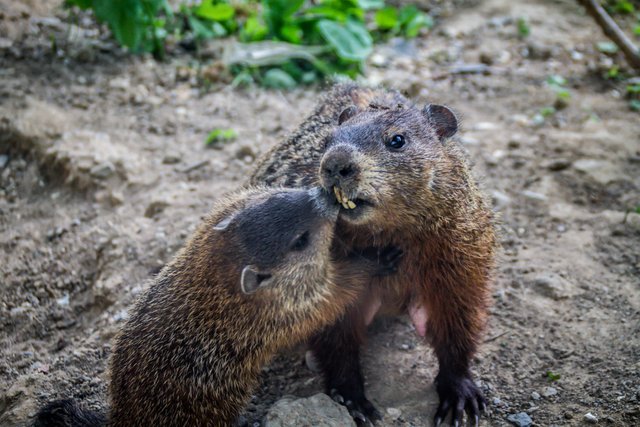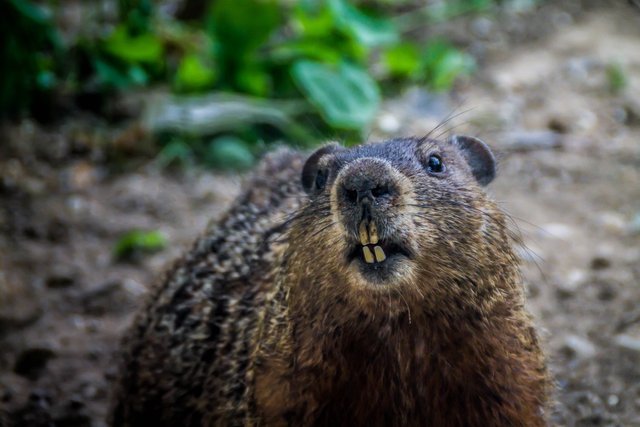Photo Journal Day 80: Surprise Encounter
A few friends and I set out for a long day of urban exploring (ended up spending 12 hours out). We found a few abandoned house's and explored them. At the second house it was a typical explore in a very unique house that was built in 1981, and while in the basement. We looked out the window to see this groundhog and her babies.
Most of the time that I was watching them, I was filming the cute little buggers as they played and ran around. But did stop to snap these pictures through the window.
The babies were so damn cute! But mamma groundhog, not so much.
They were aware of us being there, but didn't seem to mind very much as long as we were on the other side of the window. The moment we went into the backyard they ran into their burrow.
Groundhog Info:
Scientific Name: Marmota monax
Other Common Names: Woodchuck, whistle-pig, or land-beaver
Description:
The groundhog is normally brown in colour but can be completely black or completely white. It is one of Canada’s largest true hibernators. The groundhog is the major hole-digging mammal over much of eastern North America, and in some places in the west, providing all sorts of animals with shelter. The groundhog it spends much of its time eating and sunning when not hibernating or caring for young.
Behaviour:
Young woodchucks are born in April and May (in Canada, mainly in May) following a gestation, or pregnancy, period of 30 days. One litter, usually with four young, is produced per year. Woodchucks are blind and helpless at birth, about 10 cm in length and about 30 g in weight. At about 28 days old, their eyes are open, and they are covered with short hair. They are weaned, or have made the transition from mother’s milk to solid foods, when they start to emerge from the burrow at five to six weeks of age. Woodchucks grow rapidly. They weigh 570 g at eight weeks of age and become very fat for hibernation. Woodchucks have been known to live for 10 years, although the average life span is probably much less.
Source: http://cwf-fcf.org/en/resources/encyclopedias/fauna/mammals/groundhog.html




Hi! I am a robot. I just upvoted you! I found similar content that readers might be interested in:
http://www.hww.ca/en/wildlife/mammals/woodchuck.html